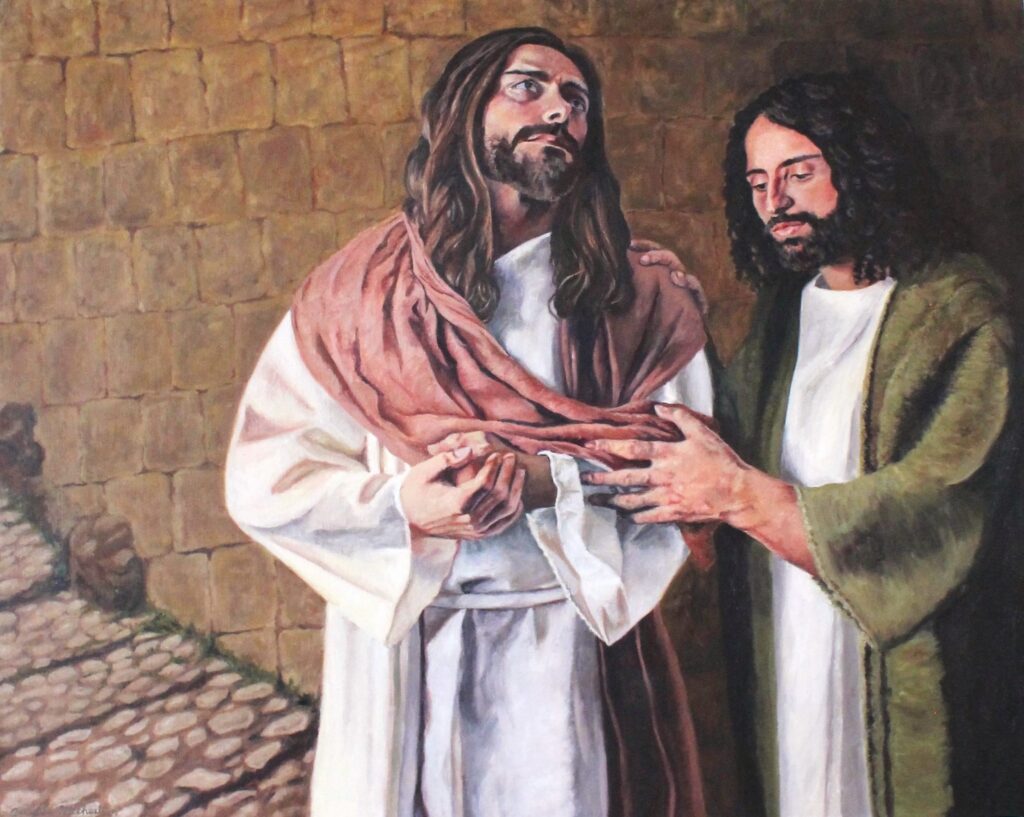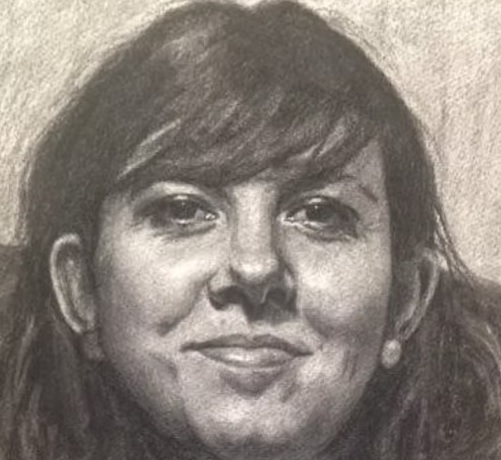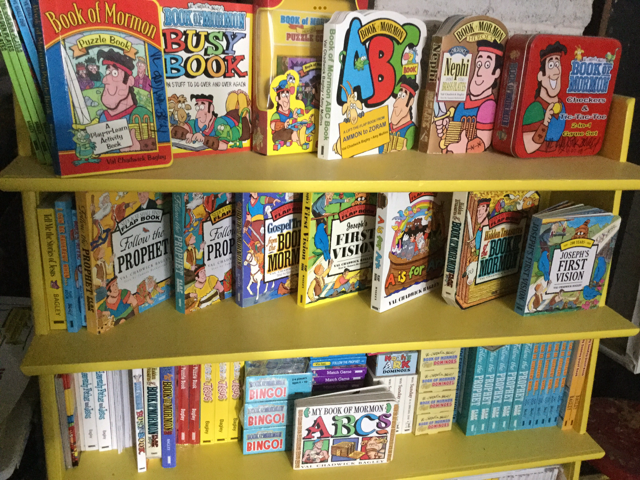Growing up, I was surrounded by creativity and love of the beauty in the world. My dad was a concert violinist, a writer, and an inventor. My mom sang hymns, gardened, and created beautiful quilts. Both were art appreciators. They spoke often of works of art that inspired them.
My mom had traveled to Europe and talked about her experience seeing the works of Michelangelo and da Vinci. Stories of her travels led me to study works of art from these masters who demonstrated devotion to God in their work, which caused me to seek out other artists like Carl Bloch and more modern contemporary artists like Harry Anderson and Greg Olsen. Being in a home surrounded by beautiful paintings of Christ guided my journey to want to do the same.
Preparing to Paint the Divine
The desire to paint Christ came very early in my life; however, the application of this was and still is very intimidating. Of all the subjects I paint, this is the one that requires the most meditation, study, personal reflection, and help from Above. I find that when I am working on a painting of a spiritual nature, but especially one that includes an image of the Savior, it is very important how I prepare myself for the task.
This starts with prayer, then leads to scripture study, which is often tied to the theme of the piece, and then I journal my ideas and impressions. I am also affected by what I listen to while I paint. I will listen to conference talks, hymns, classical music, or uplifting podcasts to help with the mood as I work. I pray for the Spirit to be present while I work so that the viewer feels the same spirit while appreciating the finished work.
Searching for References
The first time I attempted to paint a depiction of Christ, I prayed earnestly to find a model to photograph as a reference. I searched for someone with kindness in his eyes and the love of the Savior in his countenance. I was blessed to find a model who exhibited both attributes, and he was wonderful to work with. I would explain what I needed during our photo shoot, and his expression would become contemplative. The feeling of trying to bring the Spirit for both of us was there.
I prepare myself personally as I plan to paint a representation of the Savior; models and actors do the same when they are trying to represent Him as well. It’s a daunting task for both of us, but I believe God sees our efforts and magnifies them. I’ve definitely felt His hand helping me with what He wants me to accomplish. The challenge for me then is to bring that same spirit into the physical work of art.
Receiving Inspiration through Trials
I have had some of my most emotional paintings come to me during my darkest times. There are paintings and ideas that have come to me specifically because of what I am going through at the time. It helps me to know that God sees me and speaks to me through the gifts He has given me.
I know also that if I am feeling these things, others are as well, and my prayer and hope is to allow God to use me to speak to others who are struggling. My painting Our Mediator came during a challenging time in my life, and I felt so strongly that because of Jesus, I would be able to get through my trials because He would mediate for me. It was such a comforting feeling.

Coming Closer to Christ
When I am painting works of Jesus, I find that I search and ponder about His teachings more in my daily life. I am searching for what He said in the scriptures and for the deeper meanings behind His words. I find that I grow closer to Him through this process, and it not only helps me paint, but also shapes me as a person.
After losing my father unexpectedly, I thought about how Jesus had experienced loss. He lost His adopted father, Joseph, His cousin John, and for a time, His friend Lazarus. Knowing this led me to paint Acquainted with Grief, which illustrated the grief Jesus felt in the moment of losing a loved one. I felt closer to Him knowing that He knows what my grief feels like.

Honoring the Great Creator
God is the best example of being a perfect creator. What a wonderful example we have from Him of the joy of creation. He shows His love for us when He shares His creations with us. It is like admiring a sunset, knowing that it will disappear the next day, but that its beauty, while fleeting, is stunning.
God’s creations show us the love God has for us. They show us that He created everything and continues to create not just the world around us, but also the beauty in our lives amidst our trials and weaknesses. That’s what I see every day as He takes my weaknesses and makes them stronger in my attempts to use the talents He has given me to glorify my Savior, Jesus Christ.

Jessica Michaelson
Jessica teaches art in her home studio part-time to both adults and children. She enjoys sharing what she knows and works with her students in nearly every medium. Not only has teaching been fulfilling, but it has solidified what Jessica has learned through countless hours of study and practice as only teaching can.
In her continued art practice, she has found she enjoys working with an emphasis in portrait and figurative work, as well as works in nature. More recently, Jessica has been painting religious and spiritual work with a focus on painting Christ. Her religious work holds great meaning for her. Her works have been published in books and calendars and highlighted in gallery shows. You can learn more about her on her website.













